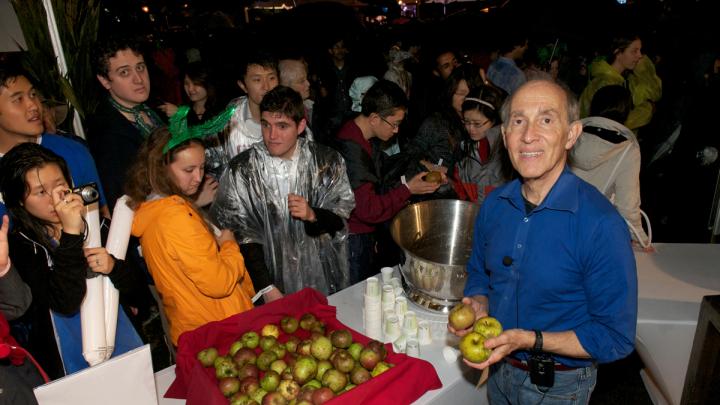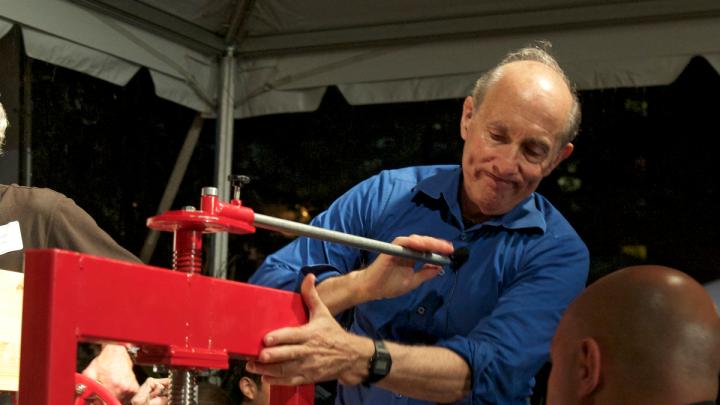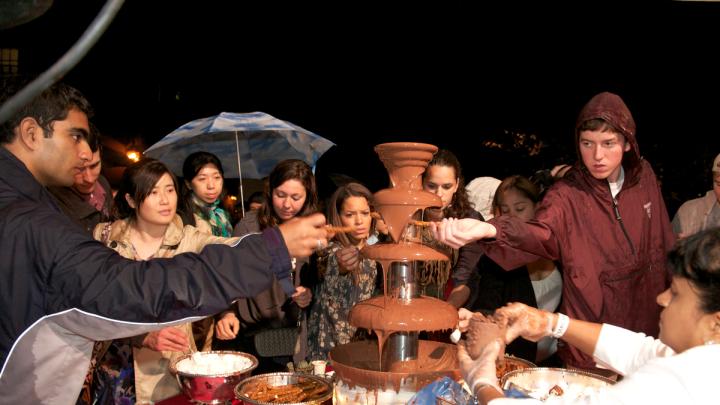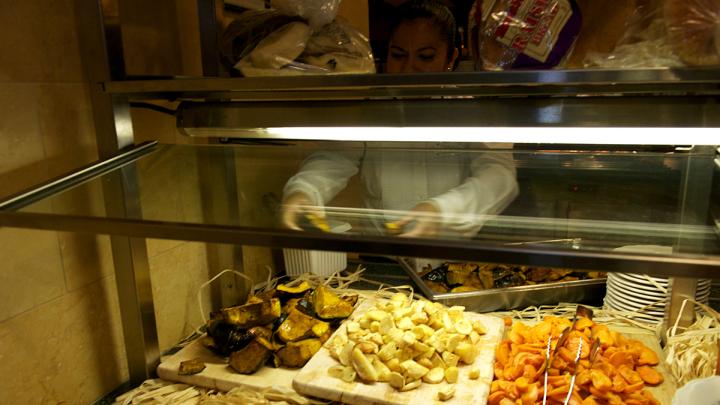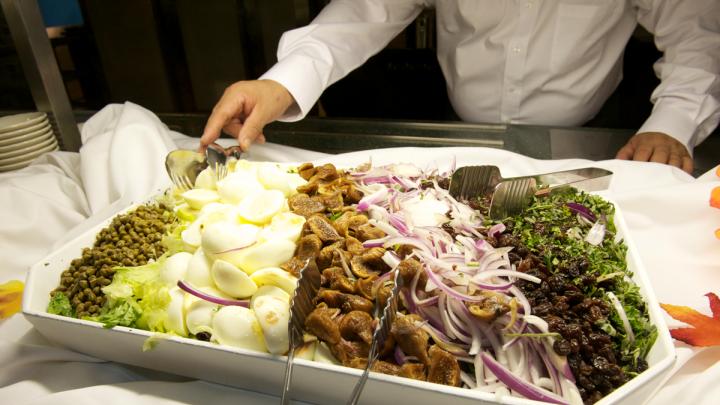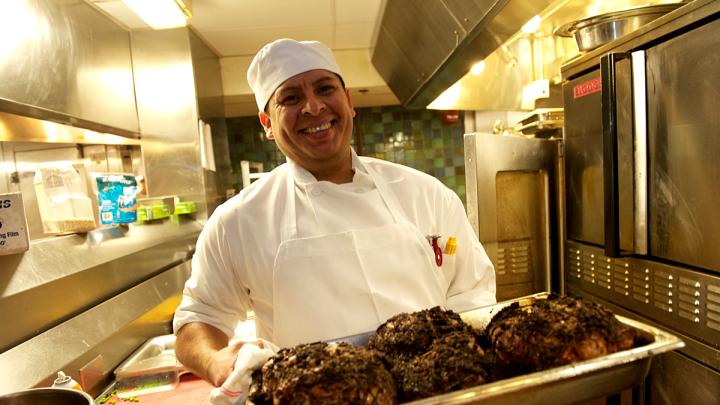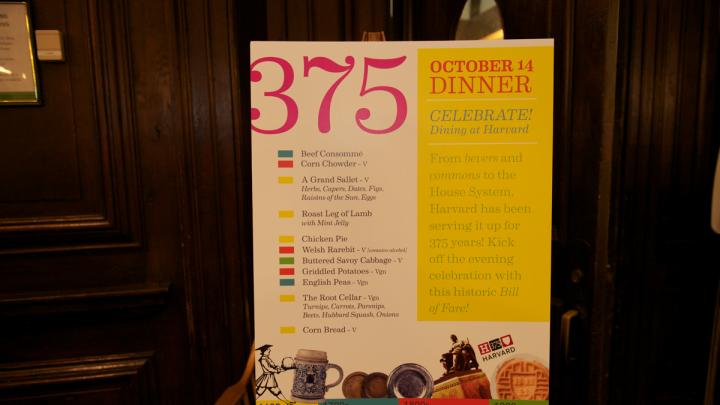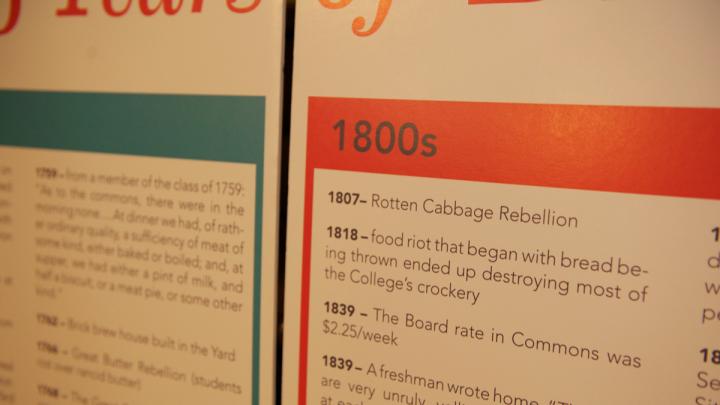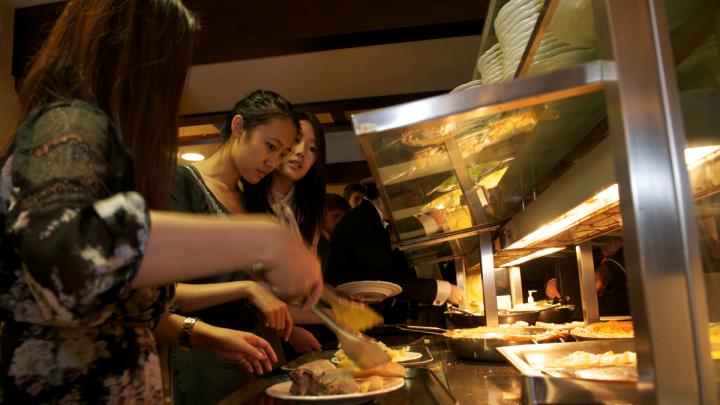Where could you find a Nobel laureate standing for hours ladling out his homemade apple cider to thousands of rain-soaked partygoers? In the Yard, on Friday night.
Eric S. Chivian, founder and director of the Center for Health and the Global Environment at Harvard Medical School (who shared the 1985 Peace Prize for his work with International Physicians for the Prevention of Nuclear War), stood in the “cider tent” during the 375th anniversary celebration touting his heirloom Roxbury Russet apples, along with some regional history. The apples, named for the Massachusetts town (now a Boston neighborhood) where they originated, were first grown in the 1630s—around the same time Harvard was born. “This is pure cider from one kind of apple—that’s why it tastes so complicated”—and isn’t too sweet, Chivian explained, as apples were steadily ground and pressed behind him, producing a brew much punchier than store-bought brands, which are typically made from a mix of varieties. Chivian says he is “sure that there were apple trees in Harvard Yard from the time it was founded—and I have no doubt they grew Roxbury Russets starting in the seventeenth century and added other New England varieties, like Baldwins, in the eighteenth.”
Chivian grows both, along with other fruits, on his farm in central Massachusetts. Baldwins came from the town of Wilmington in the 1740s and were among the most popular apples in New England for almost 200 years. “In 1767, fermented cider was the most popular drink in Massachusetts. Men, women, and children drank, per capita, 35 gallons of it a year,” he reports. “They didn’t trust their water, they didn’t have cows, and they sure weren’t drinking orange juice.” A bin full of apples was also accessible as people armed with useless umbrellas and wet feet slogged their muddy way up to the tent. “This will blow your mind,” he promised the group: “Harvard students were served cider with every meal in the seventeenth and eighteenth centuries, and probably well into the nineteenth.”
Chivian’s was one of four central food tents feeding those who swarmed throughout the Yard, enjoying music, dancing, and student performers. Harpoon Brewery, founded by Dan Kenary ’82 and Rich Doyle ’82, M.B.A. ’86, served its 1636 ale, a rich, darker, foamy beer otherwise only available at the Queenshead Pub and at the Harvard Faculty Club. Another site offered German-style bratwurst with mustards and sauerkraut. Richardson’s Ice Cream, of Middleton, Massachusetts, doled out delicious raspberry and mint chocolate chip, with multiple toppings like Oreos and sprinkles on offer. Meanwhile, students from the General Education “Science and Cooking” course (“From Haute Cuisine to Soft Matter Science”); donned protective masks to create vanilla ice cream with the aid of liquid nitrogen.
Among the biggest draws of the night were triple-tiered chocolate fountains with multiple dippables: pretzels, marshmallows, and strawberries. Students, alumni, and faculty lined up 12-deep to get at the cascading sweets—braving increasingly thick mud to do so and leaving with satisfied smiles. Also scrumptious were hot chocolate and brownies made from about 670 pounds of artisanal chocolate donated by the Taza Chocolate factory in nearby Somerville, Massachusetts. Taza makes chocolate from scratch on site from raw cacao beans grown in the Dominican Republic and Bolivia.
Taza was grinding the beans on site to show how they become the muddy-looking bitter paste called chocolate liquor that is used to create chocolate bars. “It’s an educational demonstration to connect people to the tree the beans grow on, to see where chocolate begins and how it becomes this delicious substance we all love so much,” said Stephanie Larason ’87, Taza’s business development and outreach manager. Head chocolate-maker Mike Schechter was on hand, doing the grinding. “You roast the bean and winnow it,” he explained. The beans break down into the paste during grinding because they are “about 50 to 55 percent fat; the rest is cocoa solids,” he added, trying to entice a group of undergraduates to taste some of the chocolate liquor. “Take some,” he told a group of huddled women looking skeptically at the brown mass he scooped out of the grinder. “With our fingers?” one asked. “Sure,” he said. “Mmmm, very bitter. Interesting,” another added as she popped a finger in her mouth. “Now, where are the brownies?”
Food was also a prominent feature at numerous pre-Yard events dotted throughout campus and Harvard Square. The House dining halls served a rigorously researched (by students) Colonial-era repast of beef consommé and corn chowder, followed by “a grand sallat” of greens, herbs, capers, dates, raisins, figs, and eggs—a feature of Harvard’s menu in the mid 1600s. The entrees comprised roast leg of lamb with mint jelly, chicken pie, and Welsh rarebit; they were accompanied by buttered Savoy cabbage, “griddled” potatoes, and English peas. And don’t forget the cornbread, a New England staple that originated with Native Americans. (Similar ingredients were used to make hasty pudding, a Harvard dessert that inspired the name of the theater group.) Also on offer, a “root cellar” selection of chunked and roasted beets, onions, potatoes, parsnips, and carrots, evoking the pre-refrigeration days when these hearty vegetables were a dining staple from autumn through spring. Undergraduates plunked their plastic trays down on white tablecloths and wiped their mouths with black cloth napkins. Then, well-fortified by hearty fare, they sallied forth to face the elements en route to the decadent desserts awaiting them in Harvard Yard.
Read more about the celebration, including an account of the main ceremony with Yo-Yo Ma ’76; a dispatch on the student performances; information on the red velvet cake from Joanne Chang ’91 and Flour bakery; and two student accounts, one on taking part in the Eliot House parade, and one about how no part of the evening went as planned.
